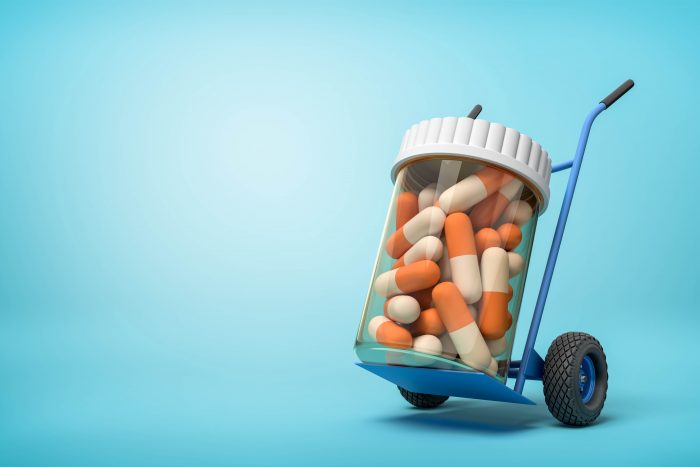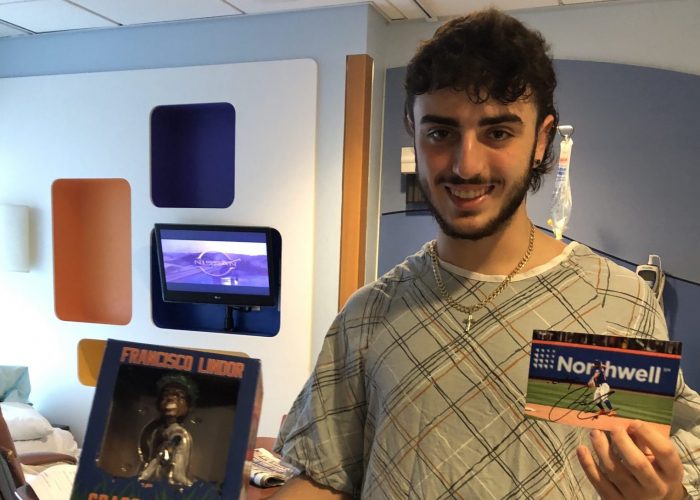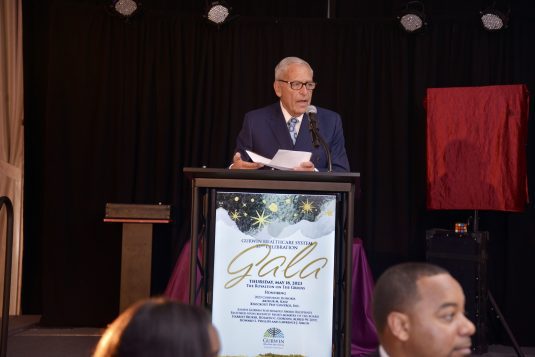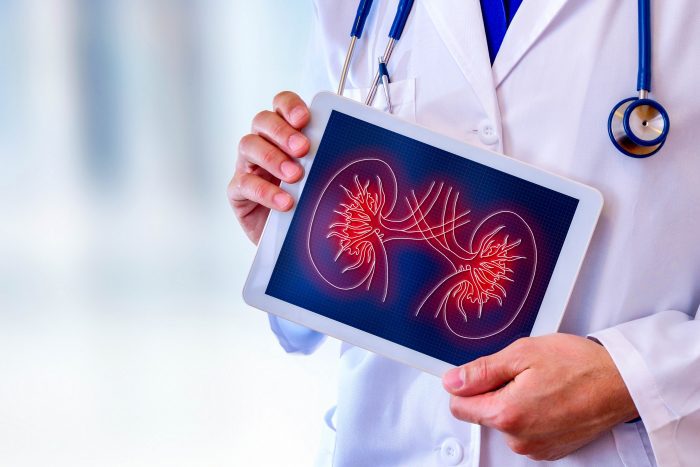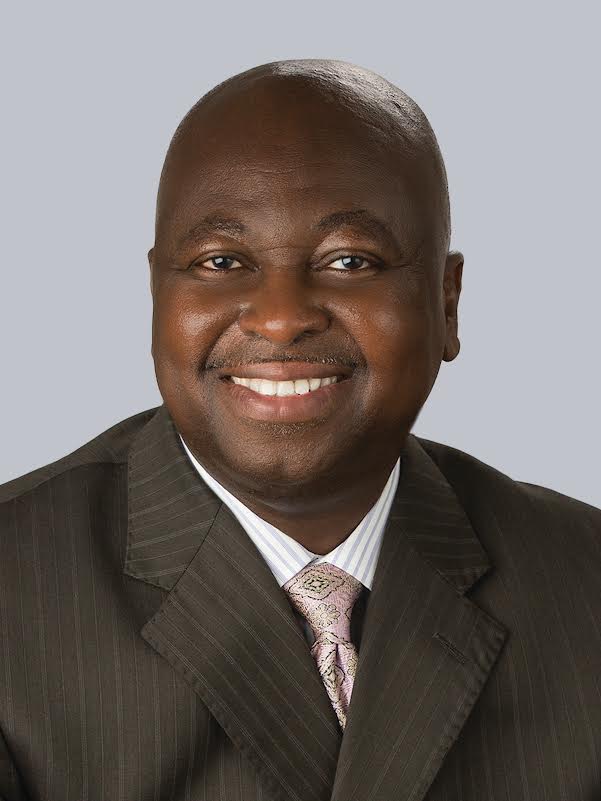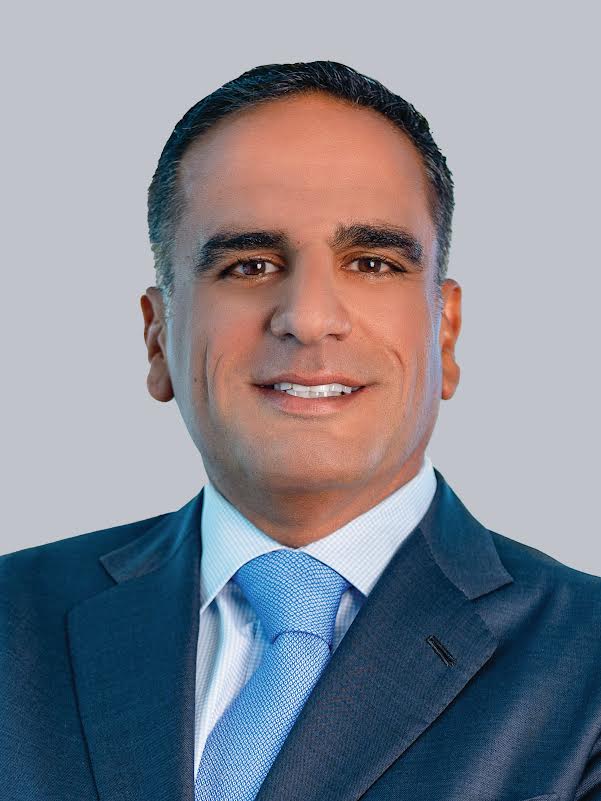Emma Clark Library, 120 Main St., Setauket presents a Shed the Meds event on Tuesday, Aug. 8 from 4 to 7 p.m. The Suffolk County Sheriff’s Office hosts this safe way to properly dispose of unused medications. Proper disposal is essential to protect the environment and ensure that old drugs don’t end up in the wrong hands. Please note: The Suffolk County Sheriff’s Office cannot accept any liquids, needles, creams, or ointments of any kind. They are only accepting unused or expired medications from individuals (not large quantities from a doctor’s office or health care facility). Questions? Email [email protected]
GoFundMe organizers seek to ‘attack’ medical bills for John Glenn student
By Rita J. Egan
Friends are rallying around an Elwood-John H. Glenn High School student to raise money for his medical treatment.
In July, doctors diagnosed high school senior Zach Berger with Ewing sarcoma, a rare and aggressive pediatric cancer. As soon as they heard the news, his mother’s friends, Carolyn O’Brien and Courtney Presti, along with Berger’s friend and O’Brien’s son Joseph Pontieri, set up a GoFundMe page to raise $50,000 to help offset medical costs and ease financial strains.
Berger’s mother, Dinah, said his family, which includes his dad David and older sister Katrina, was surprised and touched when they heard about the GoFundMe campaign.

In addition to donations, Berger’s friends and their families have been showing their support in various ways. His mother said a friend’s father who owns a diner has regularly brought them food since he heard the news.
“We have a saying, ‘Elwood Strong,’ and they’ve really proven it,” Dinah Berger said, adding she couldn’t thank the community enough.
The fundraising campaign organizers are using the hashtag #elwoodstrong as well as #zachattack, which O’Brien said has been used when Berger is wrestling.
“It was fitting to this situation — to attack it head on,” O’Brien said.
The family friend said the 17-year-old is always looking to help out.
“He walks in [the house], and if he sees the garbage is full, he just goes and takes the garbage out,” O’Brien said.
Dinah Berger said her son was in terrible pain one day, and she brought him to Huntington Hospital. Doctors first thought he had kidney stones, but tests found none. A CT scan was ordered after a urine test showed a small amount of blood. When the scan was analyzed, the top part of a tumor could be seen.
An MRI taken at an outpatient facility confirmed the tumor, and the mother took her son to Memorial Sloan Kettering Cancer Center in Manhattan. It was there the family received hope from Berger’s oncologist Dr. Leonard Wexler, even though Dinah Berger said it has been difficult.

Due to Zach Berger’s treatments, the incoming senior will be unable to attend school when it begins in September, according to his mother. In addition to being an honor student, he has been a member of the high school football and wrestling teams. Earlier this year, he placed in the county championships for wrestling.
“We all have our moments, but he’s been trying to be really brave,” Dinah Berger said. “It’s a lot for a 17-year-old to know they’re going to be hit with this.”
His mother, who is divorced from Berger’s father and works part time at two small companies, will take time off from work as her son will need to be taken back and forth to the city for chemotherapy and doctor appointments at MSK. In addition to chemotherapy, his treatment will possibly include surgery and radiation.
“One of the oncologists said this is a full-time job,” she said.
Dinah Berger said there is a possibility that a room will open up at the Ronald McDonald House where they can stay, and eventually the goal is for her son to receive treatment at Sloan’s Commack location.
The mother said the family recently received good news when a PET scan showed that the tumor had not metastasized.
“It’s the happiest news I have had in my life,” she said. “The whole thing is horrible and a nightmare, at least that gave me some hope.”
As of Aug. 1, 205 donations — totaling $16,000 of the $50,000 goal — have been collected. O’Brien said she’s not surprised.
“He’s one of those kids that everyone likes,” she said. “If you were going to support or donate to any family, this would be the family to donate to.”
For more information or to donate, visit www.gofundme.com/f/hsf9ja-zachattack.
Gurwin Healthcare System recognizes honorees at annual Celebration Gala
More than 200 people attended the annual Gurwin Healthcare System Celebration Gala at The Royalton on the Greens in Melville recently, honoring individuals who have made a significant impact in the Gurwin Community.
“We celebrate our community members, staff, board members, and those who have worked tirelessly to spread Gurwin’s mission of providing the highest quality health care services in a warm, loving, secure and dignified environment,” said Stuart B. Almer, President and CEO of Gurwin Healthcare System.
Arthur Katz, Founder of Knockout Pest Control, Inc. was the recipient of the 2023 Corporate Honoree Award. Mr. Katz has been a longtime advocate and supporter of Gurwin since the original nursing home welcomed its first resident in 1988.
In addition, the Joseph Gurwin Award was presented posthumously to five past board members, individuals who exemplify the qualities of leadership, vision, passion, philanthropy, and the ability to inspire others. Harriet Becker, Rosalyn C. Gordon, Alfred W. Levy, Howard L. Phillips and Lawrence J. Simon all were instrumental in building Gurwin’s vision that shaped the organization’s growth over the past 35 years.
“We honor Arthur, Harriet, Roz, Al, Howard and Larry as partners who have helped us succeed along our journey of serving thousands of residents and their families over more than 3 decades,” said Bert Brodsky, Chair of the Board of Directors at Gurwin Healthcare System.
“We are proud to celebrate our achievements as a community, remember the legacies of those who are no longer with us, and look forward to caring for generations well into the future.”
Mather Hospital rated as high performing by U.S News & World Report
Mather Hospital, 75 North Country Road, Port Jefferson was rated as high-performing in four adult specialties and two procedures and conditions by U.S News & World Report’s 2023-2024 Best Hospitals rankings. Mather was rated as high performing in:
- Gastroenterology & GI surgery
- Geriatrics
- Orthopedics
- Pulmonology & Lung Surgery
- Heart Failure
- Kidney Failure
Northwell’s North Shore University Hospital was ranked No. 1 in the state and in the top 20 hospitals in the nation. Two other Northwell hospitals placed in the top 10 in state rankings, and dozens of programs across the health system were highly ranked. Overall, eight Northwell hospitals were ranked among the best in New York. North Shore University Hospital tied for the best hospital in the state. Lenox Hill Hospital in Manhattan was ranked No. 5, and Long Island Jewish Medical Center tied for No. 6.
Now in its 34th year, Best Hospitals evaluates hospitals in more than 30 medical and surgical services, with the objective of providing patients with data-driven decision tools. U.S. News said that to keep pace with consumers’ needs and the ever-evolving landscape of health care, several refinements are reflected in the 2023-2024 Best Hospitals rankings and ratings.
The 2023-2024 rankings highlight 484 Best Regional Hospitals that deliver high-quality treatment across many areas of care. Of those, 22 hospitals are named to a national Honor Roll for demonstrating exceptional breadth of excellence across clinical specialties.
Visit U.S. News’ website for the full Best Hospitals rankings
Medical Compass: Reducing kidney stone risk
Lowering your sodium intake can help
By David Dunaief, M.D.

Although it’s possible to have a kidney stone without symptoms, more often they present with the classic symptoms of blood in the urine and colicky pain. The pain can be intermittent or constant, and it can range from dull to extremely painful, described by some as being worse than giving birth, being shot or being burned. The pain can radiate from the kidneys to the bladder and even to the groin in males, depending on the obstruction (1).
Stones are usually diagnosed through the symptoms and either abdominal x-rays or non-contrast CT scans.
Unfortunately, the first line treatment for passing kidney stones — at least small ones — involves supportive care. This means that patients are given pain medications and plenty of fluids until the stone(s) pass. Usually stones that are smaller than four millimeters pass spontaneously. Stones closest to the opening of the urethra are more likely to pass through on their own (2).
Generally, if you’ve passed a kidney stone, you know it.
In the case of a stone too large to pass naturally, a urologist may use surgery, ultrasound, or a combination of methods to break it into smaller pieces, so you can pass it. Unfortunately, once a patient forms one stone, the possibility of having others increases significantly over time. The good news is that there are several lifestyle changes you can make to reduce your risk.
How much water do you need to drink?
First, it is very important to stay hydrated and drink plenty of fluids, especially if you have a history of stone formation (3). You don’t have to rely on drinking lots of water to accomplish this, though. Increasing your consumption of fruits and vegetables that are moisture-filled can help, as well.
Do supplements play a role in stone formation?
One of the simplest methods is to reduce your intake of calcium supplements, including foods fortified with calcium. There are two types of stones. Calcium oxalate is the dominant one, occurring approximately 80 percent of the time (4). Calcium supplements, therefore, increase the risk of kidney stones.
When physicians started treating women for osteoporosis with calcium supplements, the rate of kidney stones increased by 37 percent (5). According to findings from the Nurses’ Health Study, those who consumed highest amount of supplemental calcium were 20 percent more likely to have kidney stones than those who consumed the lowest amount (6). It did not matter whether study participants were taking calcium citrate or calcium carbonate supplements.
Interestingly, calcium from dietary sources actually has the opposite effect, decreasing risk. In the same study, those participants who consumed the highest amount of dietary calcium had a 35 percent reduction in risk, compared to those who were in the lowest group. Paradoxically, calcium intake shouldn’t be too low, either, since that also increases kidney stone risk. Changing your source of calcium is an important key to preventing kidney stones.
What role does sodium play in stone formation?
Again, in the Nurses’ Health Study, participants who consumed 4.5 grams of sodium per day had a 30 percent higher risk of kidney stones than those who consumed 1.5 grams per day (6). The reason is that increased sodium causes increased urinary excretion of calcium. When there is more calcium going through the kidneys, there is a higher chance of stones.
Does protein play a role in stone formation?
Animal protein may play a role. In a five-year, randomized clinical trial, men who reduced their consumption of animal protein to approximately two ounces per day, as well as lowering their sodium, were 51 percent less likely to experience a kidney stone than those who consumed a low-calcium diet (7). These were men who had histories of stone formation.
The reason animal protein may increase the risk of calcium oxalate stones more than vegetable protein is that animal protein’s higher sulfur content produces more acid. This acid is neutralized by release of calcium from the bone (8). That calcium can then promote kidney stones.
Does blood pressure impact kidney stones?
Some medical conditions may increase the likelihood of stone formation. For example, in a cross-sectional study with Italian men, those with high blood pressure had a two times greater risk of kidney stones than those who had a normal blood pressure (9). Amazingly, it did not matter whether or not the patients were treated for high blood pressure with medications; the risk remained. This is just one more reason to treat the underlying cause of blood pressure, not just the symptoms. The most productive way to avoid the potentially excruciating experience of kidney stones is to make these relatively simple lifestyle changes. The more that you implement, the lower your likelihood of stones.
References:
(1) emedicine January 1, 2008. (2) J Urol. 2006;175(2):575. (3) J Urol. 1996;155(3):839. (4) N Engl J Med. 2004;350(7):684. (5) Kidney Int 2003;63:1817–23. (6) Ann Intern Med. 1997;126(7):497-504. (7) N Engl J Med. 2002 Jan 10;346(2):77-84. (8) J Clin Endocrinol Metab. 1988;66(1):140. (9) BMJ. 1990;300(6734):1234.
Dr. David Dunaief is a speaker, author and local lifestyle medicine physician focusing on the integration of medicine, nutrition, fitness and stress management. For further information, visit www.medicalcompassmd.com or consult your personal physician.
Dr. Israel Brown joins New York Health
New York Health (NY Health) has announced the addition of board-certified obstetrician and gynecologist Israel K.O.B. Brown, DO, FACOOG. He will practice at 518 Hawkins Avenue in Ronkonkoma and 6277 NY-25A in Wading River.
“We are thrilled to have Dr. Brown join NY Health,“ said Dr. Rohit Reejsinghani, FACP, MBA, Executive Director of NY Health.. “Dr. Brown brings 14 years of experience in Women’s Health and will make a great addition to our practice.”
Dr. Brown brings a wealth of expertise and a patient-centered, holistic approach to his practice. His areas of specialization include Polycystic Ovarian Syndrome and Menstrual Disorders, Endometriosis, and Diabetic Complications in pregnancy.
“I am excited to join NY Health and contribute to their vision and mission of providing healthcare to patients regardless of their backgrounds,” said Dr. Brown.
He is a fellow of the American College of Osteopathic Obstetricians and Gynecologists (FACOOG), as well as a member of the American Congress of Obstetricians and a member of Gynecologists (ACOG), the American Osteopathic Association (AOA).
As an Alum of the National Health Service Corp, Dr. Brown worked with the underserved communities of Fresno County, California, as well as in private practice and speaks English, Twi, Akan, and Guan.
To make an appointment with Dr. Brown, call 631-473-7171.
Dr. Sherwin Zargaroff joins New York Health
New York Health (NY Health) has announced the addition of board-certified urologist Sherwin Zargaroff, MD. Dr. Zargaroff will practice at 5316 Nesconset Highway in Port Jefferson Station.
“Dr. Sherwin Zargaroff will make a wonderful addition to our team of urologists at NY Health,” said Dr. Rohit Reejsinghani, FACP, MBA, Executive Director of NY Health. “His dedication to staying abreast of the latest advancements in the field, combined with his compassionate approach, will ensure that our patients receive the highest quality of care.”
Dr. Zargaroff specializes in kidney stones, enlarged prostate, trouble voiding, overactive bladder, urinary tract infections, sexual dysfunction, low testosterone, urological cancer workups, hypogonadism, varicocele repair, and male infertility.
“The field of urology offers a great balance between the surgical and medical management of a patient’s urological issues,” Dr. Zargaroff said. “Urology has always been at the forefront of innovative technology. When coupled with patient-centered care, we can treat the full patient — by developing individualized, comprehensive care plans.”
He has authored in peer-reviewed journals and has been a speaker at urological conferences across the nation. He is a member of the American Urological Association and is fluent in both English and Farsi languages.
To make an appointment with Dr. Zargaroff, call 631-758-7003.
Gurwin Healthcare System hosts Barbie Dream Salon makovers for residents
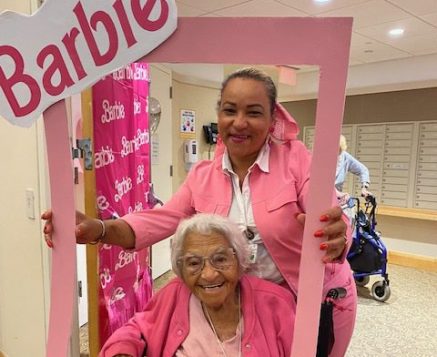
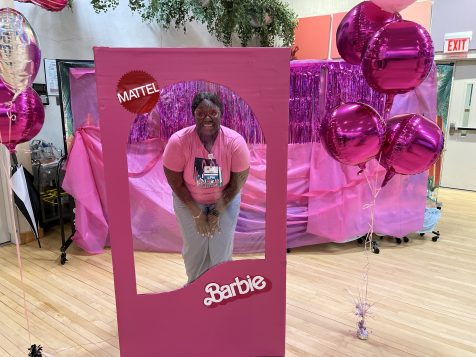
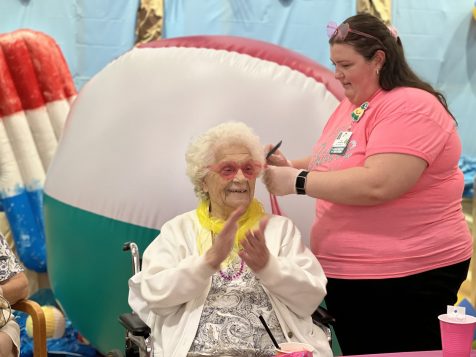
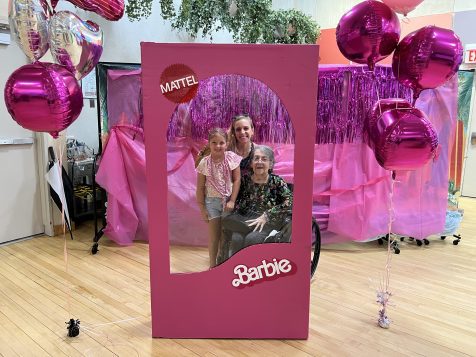
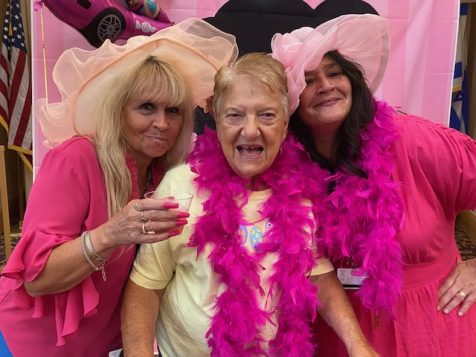
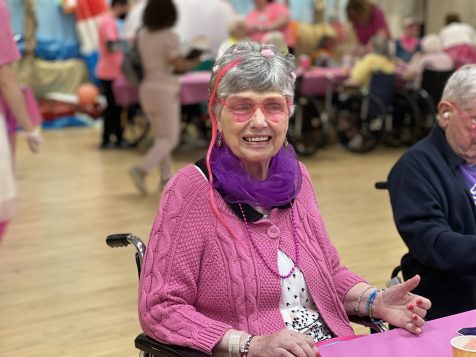
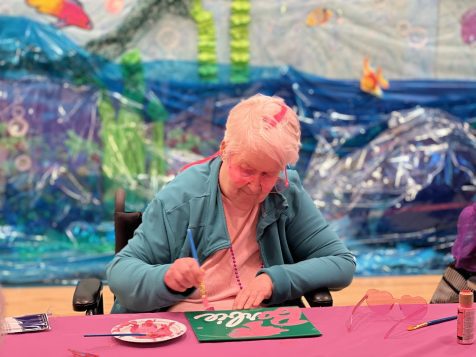
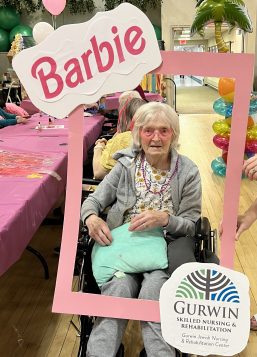
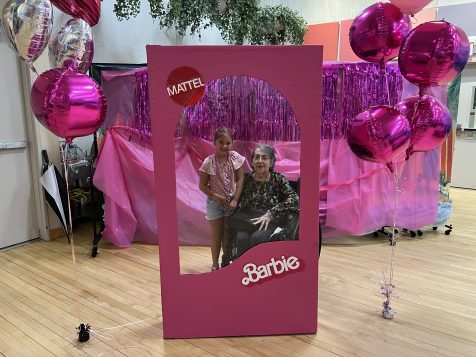
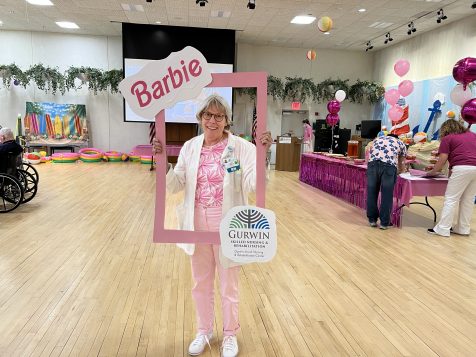
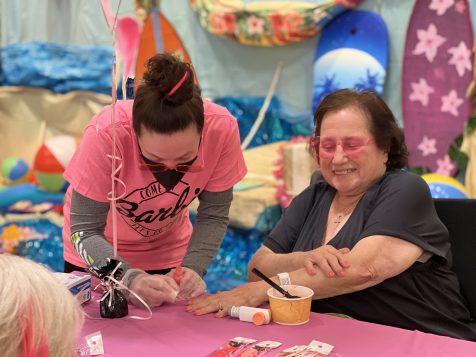
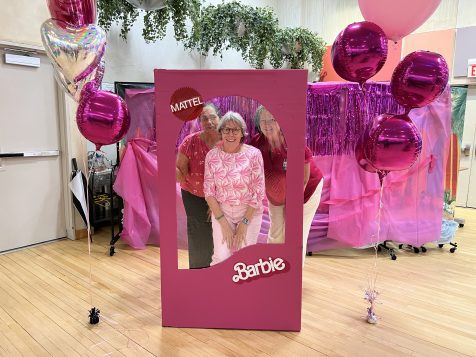
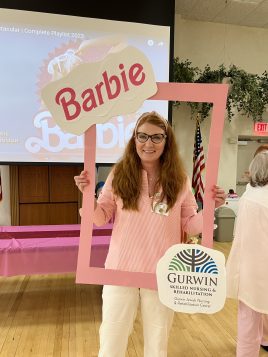


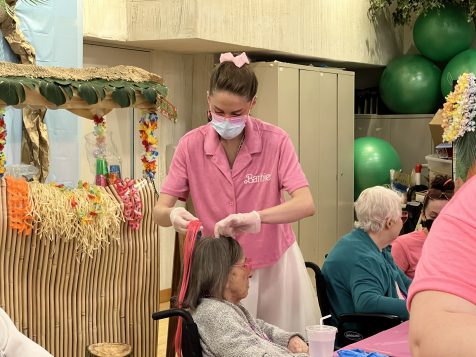
Residents and staff of Gurwin Healthcare System in Commack caught “Barbie Fever” days before the release of the new Barbie movie on July 21 with a campus-wide “Barbie-fest” featuring all-pink days of relaxation, fun and resident makeovers at the System’s Gurwin Jewish Nursing & Rehabilitation Center, Gurwin Adult Day Care Program, Gurwin Jewish Fay J. Lindner Residences Assisted Living and Fountaingate Gardens independent living community, on Tuesday, July 18 and Wednesday, July 19.
“Many of our residents remember Barbie’s introduction in the late 1950s and the excitement of getting a brand new doll, or their children grew up with Barbie and they played with the dolls together,” said Nicole Hopper, Director of Therapeutic Recreation at Gurwin Jewish Nursing & Rehabilitation Center. “It really brings back wonderful memories to a simpler time when they could be children themselves.”
The Barbie celebration took place at “Barbie’s Dream Salon,” created by Gurwin staff, dripping in Barbie’s signature Pantone 219 C “Barbie pink” hues. It was there where Gurwin residents had the opportunity to get “Barbiefied,” with manicures, makeup and hot pink hair extensions, all while sipping on Barbie mocktails. Other Barbie-themed activities included paint-your-own Barbie canvas and a Barbie photo booth for social media posting. The celebration extended to Gurwin’s Adult Day Care Programs, where program participants created bedazzled berets for an afternoon “Barbie in Paris” fashion show.
In Gurwin’s senior living communities, staff at Gurwin’s Fay J. Lindner Residences created a Barbie salon and Malibu beach-themed celebration; residents played beach volleyball, posed for Barbie and Ken photos, and created Barbie crafts while enjoying an array of pink-colored delicacies. And, at Fountaingate Gardens independent living community, staff hosted a Barbie pink lemonade and prosecco social with a viewing of the Barbie documentary.
Gurwin staff got in on the BarbieMania, dressing in their best Barbie and Ken-inspired fashions, and posing for photos with residents!
“My daughter had a Barbie collection and it made me feel good when she took care of the dolls as if they were her children,” said Marie Olivia, a 92 year-old-resident of Gurwin Jewish Nursing & Rehabilitation Center. “She had a lot of dolls and we constantly had to wash each of their clothes, press them, then dress them. She was so particular about her dolls that when her friends would come over, they were not allowed to leave until the Barbie’s were put back in their box and safely away.”
“It was truly a remarkable campus-wide celebration for our residents, as well as our staff and visitors,” said Stuart B. Almer, President and CEO of Gurwin Healthcare System. “Our amazing team pulled out all the stops to bring the Barbie pop culture phenomenon event to life at Gurwin for our residents to experience and enjoy.”
GI docs welcome Suflave, a tastier colonoscopy prep
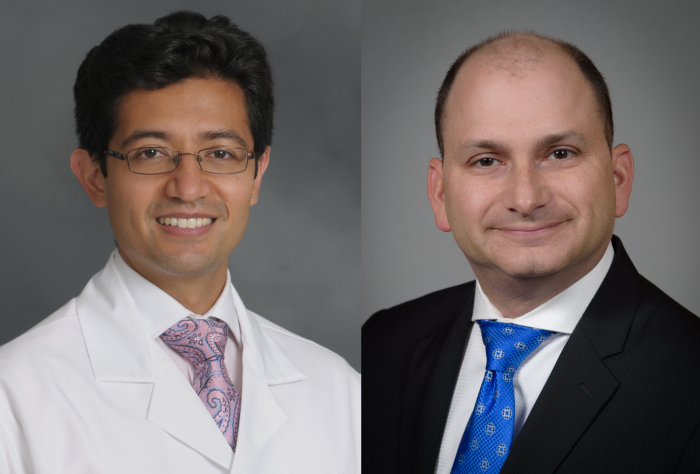
No one rushes to make a reservation at a pre-colonoscopy restaurant with a cleansing and well-reviewed special of the day.
In fact, for most people, the preparation for a potentially lifesaving diagnostic procedure is somewhere between unpleasant and unpalatable.
That, however, may have changed as the U.S. Food and Drug Administration recently approved another incremental improvement in the colonoscopy preparation that could make the preparation and the procedure — which can detect early signs of cancer — less bothersome.
Manufactured by Sebela Pharmaceuticals, Suflave is a low-volume preparation that tastes like a lemon-lime sports drink. It should be available in August.
“Patients really like” Suflave, with about 80 percent finding it palatable, said Dr. Daniel Jamorabo, a gastroenterologist at Stony Brook Medicine and assistant professor of medicine in the Division of Gastroenterology and Hepatology at Stony Brook University’s Renaissance School of Medicine.
Jamorabo called it a “wonderful addition to the bowel preparations that are out there.”
Jamorabo said the ingredients in most preparations are the same: the difference in the Suflave preparation seems connected to the flavor.
The thinking in the gastrointestinal community is that “we need to find a preparation” that is more pleasant, said Dr. David Purow, chairman of Medicine-Gastroenterology at Huntington Hospital. “That will capture more people who are somewhat reluctant to have a colonoscopy.”
Colonoscopies are a “necessary screening procedure,” Purow added, and health care professionals in the field don’t want the discomfort during preparation to discourage people from getting the procedure.
Indeed, doctors have a much higher success rate with patients when they detect evidence of colon cancer early.
Getting it right
Doctors suggested that the success of preparing for a colonoscopy varies.
Jamorabo estimated that around 10% of patients may not take all the steps necessary to have the screening.
In those circumstances, these patients have to reschedule the procedure and go through drinking fluids that clear out their systems more effectively.
Gastroenterologists urged people to ask questions if they don’t understand any of the steps they need to take to prepare.
For some patients, the COVID-19 pandemic delayed their routine colonoscopy visits, as people stayed away from hospitals and medical care facilities during periods of highest viral infection.
Jamorabo added that colon cancers have started to show up in younger people.
In 2018, the American Cancer Society recommended lowering the age for screenings from 50 to 45.
“It’s showing up more” in people under 50, said Jamorabo. “It may even go lower.”
Doctors discovered stage three colon cancer in late actor Chadwick Boseman before he was 40.
“We don’t know yet” why it’s causing cancer in younger people, Jamorabo added, but “it’s not rare. It’s been going on for a couple of years. We can’t write it off as some statistical anomaly.”
Early symptoms
People can and should be on the lookout for symptoms that might indicate colon cancer.
Unintentional weight loss, such as losing 10 pounds or more in three to four months without changing diet or exercise regimen, could indicate a problem.
Blood in the stool, changes in bowel habits and ongoing constipation could also require medical attention.
More subtle signs, such as fatigue, shortness of breath or decreased appetite, could indicate that people are losing blood in their stool.
As for the overlap between COVID and colon cancer, Jamorabo believes that the ongoing inflammation from the SARS-CoV2 virus could predispose people to cancer.
“I don’t think enough time has elapsed” to know if there’s a link between the virus and colon cancer, he added.
With anxiety building over big-picture issues like global warming and an intensely divided population, people are likely increasingly worried about the state of the world.
“Most gastroenterologists are probably busier than they’ve ever been,” Purow said. “Some of that is probably due to the times in which we are living.”
Stress and anxiety can cause gastrointestinal symptoms that manifest in different ways.
Even with less concern about the pandemic, doctors are still seeing more people with alcoholic liver disease, as some turned to alcohol to relieve their ongoing anxiety.
“We’re trying to expand our network of dietitians and mental health professionals that we’re working with,” said Purow.
Information is power
An important tool in preventing colon cancer involves tracking the colon’s health through colonoscopies.
Having Suflave on the market could “lower the dread” of having a colonoscopy, Jamorabo noted. “We need to make the logistics of the preparation easier.”
Amid rising temps, doctors advise drinking water, not alcohol
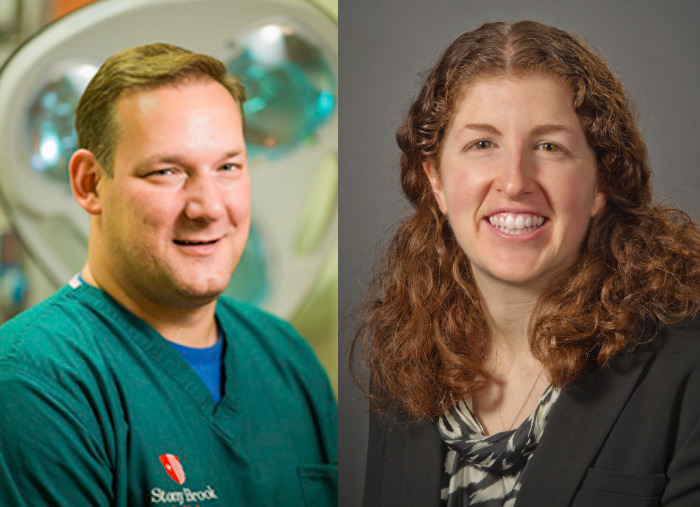
With summer in full swing on Long Island, local doctors urge residents to stay hydrated and remain aware of the potential health effects from heat and sun, particularly for vulnerable age groups.
“We worry about our elderly population,” said Dr. Jennifer Goebel, emergency room doctor at Huntington Hospital. “They have a little less reserve and can become dehydrated very easily.”
Part of the challenge for the elderly population is that their efficiency in sweating isn’t as high as it was when they were younger, doctors added.
People with heart disease and/or diabetes can also be at risk as the heat index rises.
This summer has reached numerous temperature records around the country and the world. On Monday, a buoy in the Florida Keys measured a temperature of 101.1 degrees, breaking the previous world record for sea surface temperature set in Kuwait Bay in the Persian Gulf.
Locally, in anticipation of a heat advisory for this Thursday, July 27, the Town of Huntington has opened several cooling centers, including at the Dix Hills Ice Rink and the Dix Hills Park Swimming Pool, as well as at the Elwood and Manor Field Spray Parks.
Amid high temperatures, doctors suggested residents make sure they drink enough water, particularly when active outdoors.
“Water is not light, but you should have enough access to as much water as you need,” said Dr. Robert Schwaner, medical director of the Department of Emergency Medicine and chief of the Division of Toxicology at Stony Brook University Hospital.
Before he attended medical school, Schwaner worked for a few years seal coating driveways. The heat helped the driveways but not the people working on them. Schwaner said he could go through several gallons of water each day.
Signs of heat exhaustion
People can display a variety of symptoms of heat exhaustion.
For starters, they can get headaches and nausea. That, Schwaner said, can be problematic, as both of those can also be signs of other problems.
“Those are the earliest things you start to feel,” Schwaner said. “If you don’t pay attention, it could be a slippery slope.”
People can also develop myalgia or pain in a muscle or group of muscles. Heat can also cause muscle cramping, aching and dizziness.
When body temperature exceeds 104 degrees, that person can also experience confusion or become unconscious.
“We advise any patient or bystander to call 911 for medical attention,” said Goebel.
Before medical help arrives, people can help by providing water or ice and removing equipment such as protective masks or chest protectors during sporting events.
“Small things can go a long way before medical attention” arrives, Goebel added.
People often develop problems with their thinking and central nervous systems when body temperatures climb in the heat.
When he was a fellow at Bellevue Hospital, Schwaner saw some fit athletes who were confused or aggressive come to the hospital. Sometimes, they couldn’t recognize friends and family members who brought them in for medical help.
Water wins
Doctors urged people to choose water when the temperature and heat index rise.
“People forget that water is always the best,” Goebel said. “We recommend that people stay away from coffee, tea and soda,” which can go through their systems rapidly.
Doctors particularly cautioned against consuming alcohol during extreme heat.
Adult beverages “already put people behind the eight-ball in terms of dehydration,” said Schwaner.
Weekend warriors
Adults who work all week sometimes race out on the weekends, hoping to recapture some of their previous athletic glory from their younger years.
These would-be athletic superstars, often described as “weekend warriors,” are more likely to suffer from torn hamstrings, rotator cuffs or anterior cruciate ligament damage than from heat-related injuries.
“Most weekend warriors can’t last long enough” running at top speed or racing around on a field to develop heat-related injuries, said Schwaner.
People can improve their heat resilience by doing aerobic exercise for 15 to 20 minutes twice or three times a week, Schwaner noted. “You can rev up the body’s ability to cool yourself,” he said.


